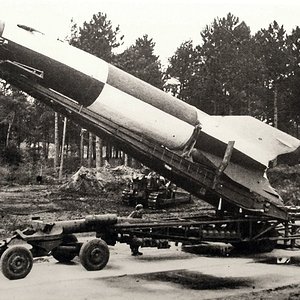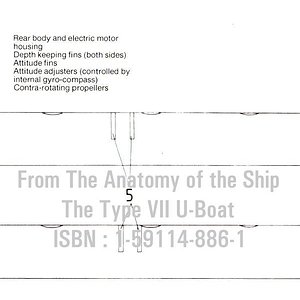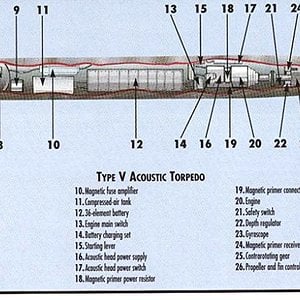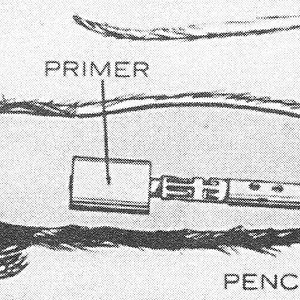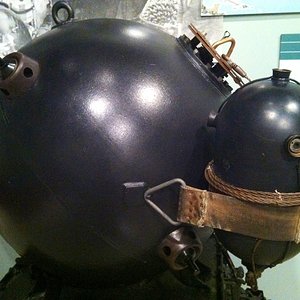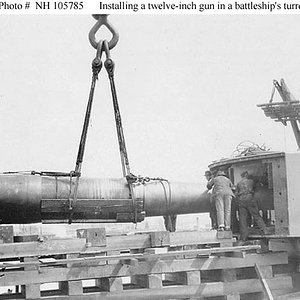Navigation
Install the app
How to install the app on iOS
Follow along with the video below to see how to install our site as a web app on your home screen.
Note: This feature may not be available in some browsers.
More options
You are using an out of date browser. It may not display this or other websites correctly.
You should upgrade or use an alternative browser.
You should upgrade or use an alternative browser.
Exploding Rats
By 1941, Germany had already subjugated half of Europe, the Luftwaffe was raining bombs down on the cities of Britain, and U-boats were inflicting terrible losses all along the Allied shipping routes. Britain needed a new weapon, a way to hinder the increasingly threatening Germans in any way possible. The cat bomb had failed. The bat bomb had not yet been dreamt up. What other wonder-weapon might slow the German onslaught?
Under the leadership of Charles Fraser Smith – a man often cited as the inspiration for Ian Fleming’s James Bond creation, Q – SOE had a section known as Section XV whose job it was to create special tools for very secret work. In a moment of startling originality, the team proposed a new chaos-inducing gadget: the rat bomb.
The mechanics were as simple as the concept was bizarre, and are nicely summed up in this extract from a diagram:
A rat is skinned, the skin being sewn up and filled with PE to assume the shape of a dead rat. A Standard No.6 Primer is set in the PE. Initiation is by means of a short length of safety fuse with a No.27 detonator crimped on one end and a copper tube igniter on the other end. The rat is then left amongst the coal beside a boiler and the flames initiate the safety fuse when the rat is thrown on to the fire, or, as in the case of the Pencil Time Fuse, a time delay is used.
So a rat’s carcass is stuffed with plastic explosives and deposited within the German coal supply in the hope that the rats would be shovelled into boilers along with the coal, where the intense heat would light the fuse and detonate the explosives. German infrastructure would be totally dismantled, military bases would be crippled, and steam engines destroyed. Supplies would run short, panic would spread, and Britain would win the war. Or at least, that is how the pitch must have sounded.
The Time-pencil was a delay fuse used to ignite explosives like the limpet mine, the clam mine, and the exploding rat. It worked via use of a corrosive acid which would burn through the wire holding the striking cap in place. The device was a clever if unpredictable one, as the acid would act differently depending on the temperatures it was exposed to. Time-pencils were colour coded and had varying fuses.
In reality, things did not go too well for the rat bomb’s maiden mission. The first batch of primed vermin bodies was seized by the Germans in what must have been one of oddest discoveries their army ever made. The secret was blown and the mission had failed – though this did not stop the Germans from organising mass searches among the coal piles for any stiff, strangely-shaped rat bodies.
The Germans became fascinated by the idea of these devices, and the deactivated rats were exhibited at military schools around the country. Who knows the devastating effects these explosive rodents would have had on the German war-machine had they slipped unchecked into the scuttles of Germany. Instead, like cats and bats, weaponised rats were never given the chance to realise their full potential, and were to be confined to history lessons and books about unusual SOE weapons.
By 1941, Germany had already subjugated half of Europe, the Luftwaffe was raining bombs down on the cities of Britain, and U-boats were inflicting terrible losses all along the Allied shipping routes. Britain needed a new weapon, a way to hinder the increasingly threatening Germans in any way possible. The cat bomb had failed. The bat bomb had not yet been dreamt up. What other wonder-weapon might slow the German onslaught?
Under the leadership of Charles Fraser Smith – a man often cited as the inspiration for Ian Fleming’s James Bond creation, Q – SOE had a section known as Section XV whose job it was to create special tools for very secret work. In a moment of startling originality, the team proposed a new chaos-inducing gadget: the rat bomb.
The mechanics were as simple as the concept was bizarre, and are nicely summed up in this extract from a diagram:
A rat is skinned, the skin being sewn up and filled with PE to assume the shape of a dead rat. A Standard No.6 Primer is set in the PE. Initiation is by means of a short length of safety fuse with a No.27 detonator crimped on one end and a copper tube igniter on the other end. The rat is then left amongst the coal beside a boiler and the flames initiate the safety fuse when the rat is thrown on to the fire, or, as in the case of the Pencil Time Fuse, a time delay is used.
So a rat’s carcass is stuffed with plastic explosives and deposited within the German coal supply in the hope that the rats would be shovelled into boilers along with the coal, where the intense heat would light the fuse and detonate the explosives. German infrastructure would be totally dismantled, military bases would be crippled, and steam engines destroyed. Supplies would run short, panic would spread, and Britain would win the war. Or at least, that is how the pitch must have sounded.
The Time-pencil was a delay fuse used to ignite explosives like the limpet mine, the clam mine, and the exploding rat. It worked via use of a corrosive acid which would burn through the wire holding the striking cap in place. The device was a clever if unpredictable one, as the acid would act differently depending on the temperatures it was exposed to. Time-pencils were colour coded and had varying fuses.
In reality, things did not go too well for the rat bomb’s maiden mission. The first batch of primed vermin bodies was seized by the Germans in what must have been one of oddest discoveries their army ever made. The secret was blown and the mission had failed – though this did not stop the Germans from organising mass searches among the coal piles for any stiff, strangely-shaped rat bodies.
The Germans became fascinated by the idea of these devices, and the deactivated rats were exhibited at military schools around the country. Who knows the devastating effects these explosive rodents would have had on the German war-machine had they slipped unchecked into the scuttles of Germany. Instead, like cats and bats, weaponised rats were never given the chance to realise their full potential, and were to be confined to history lessons and books about unusual SOE weapons.


